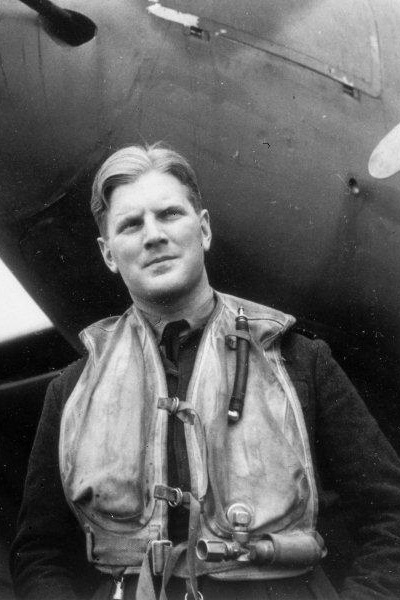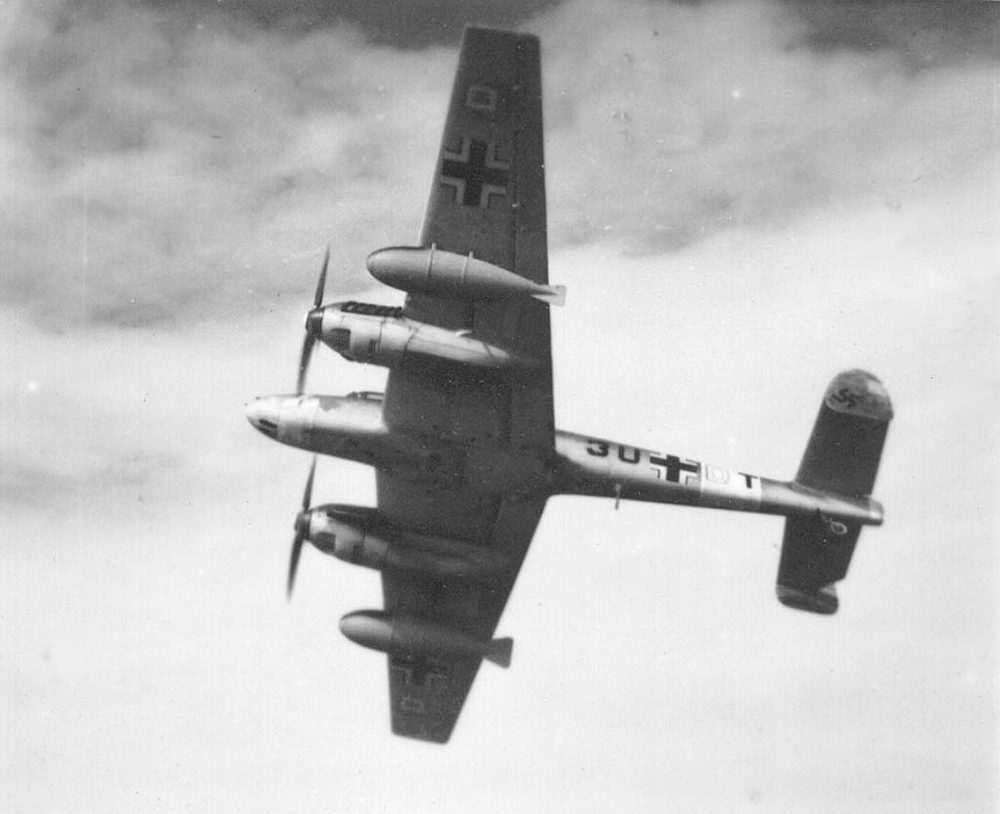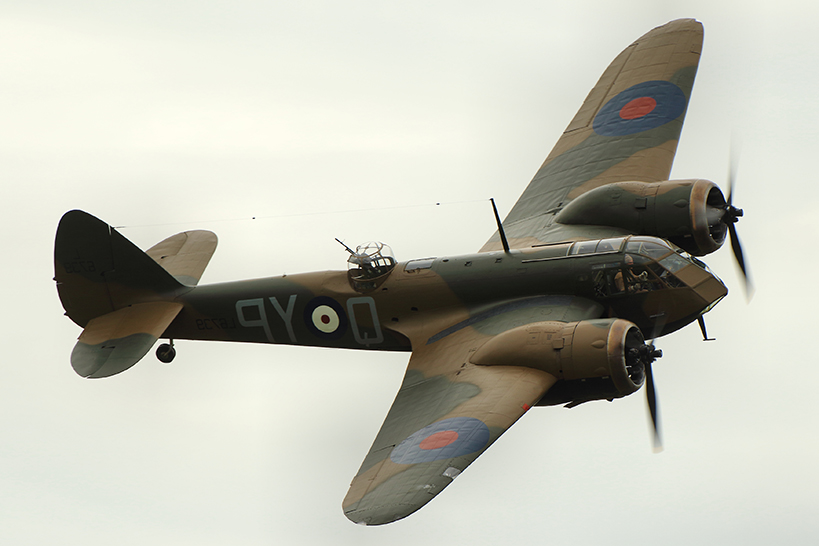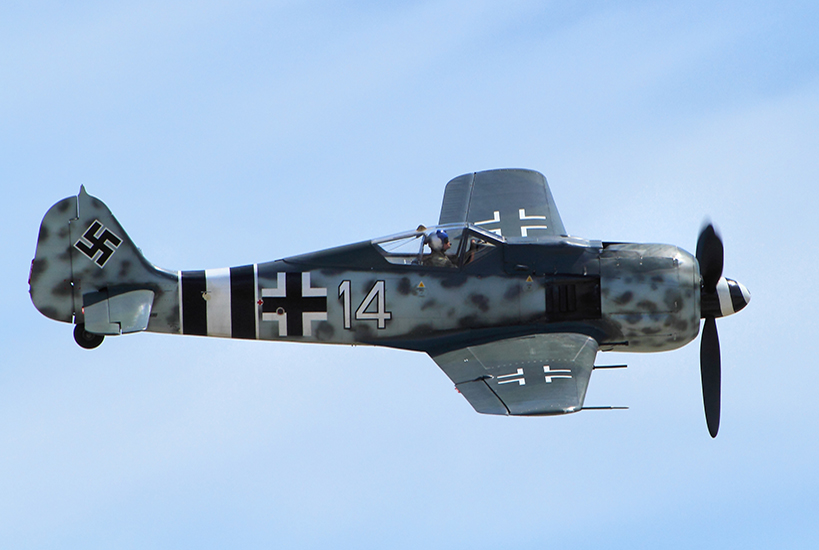Braham, John Randall Daniel "Bob"
- Date of birth:
- April 6th, 1920 (Holcombe, Somerset, England)
- Date of death:
- February 7th, 1974 (Halifax/Nova Scotia, Canada)
- Service number:
- 40667
- Nationality:
- British
Biography
Bob Braham was born on 6 April 1920 in Holcombe, Somerset. His father was a Minister and a Doctor of Theology who had served as a pilot in the Royal Flying Corps in World War I. In December 1937 he applied for a Short Services Commission in the RAF, and was accepted. His was awarded his Wings in August 1938. Early in 1939 he was posted to No. 29 Blenheim Squadron (Night Fighters) where he carried out his first operational sortie. It was from here that he shot down his first enemy aircraft, on the night of 24th August 1940, during the Battle of Britain. The Squadron was being equipped with Beaufighters MK IFs, with fitted radar. He was to destroy 19 enemy aircraft in Beaufighters. F/LT Guy Gibson who later became famous as leader of the Dam Busters was his Flight Commander. In March he destroyed his second enemy aircraft a Dornier 17Z. The squadron was moved to West Malling in Kent, and it was from this station that he developed his extraordinary night fighting skills and started his association with two observers who contributed much to his success, "Sticks" Gregory and "Jacko" Jacobs. By November 1941 he had destroyed 7 enemy aircraft, was promoted to F/LT. He was taken off operations, and was posted to 51 OTU at Cranfield as a night fighting instructor. He was posted back from the OTU to 29 Squadron in July 1942, where they still had Beaufighters. He operated with his observer "Jacko" Jacobs and during August destroyed 1 and damaged 3 aircraft. By the end of October he had destroyed 12 enemy aircraft, with 1 probable, and 4 damaged. He was given command of No 141 Squadron. His observer F/O Gregory DFC DFM was posted with him. By his example, dedication and courage, he was able he was able to transform the Squadron from a defensive role to an offensive one. He was only 22 years of age at this time. From February 1943, and despite training new crews, W/C Bob Braham was pressing for a more offensive and aggressive role for the Squadron. They carried out night Ranger patrols over Brittany, and daylight intercept patrols over the Bay of Biscay and Atlantic Approaches. Braham carried out the first of both these types of operations and continued with attacks on trains, stations motor transports and other ground targets. At sea he damaged a U-boat, torpedo boat and an E-boat. His own aircraft was attacked by an enemy fighter and was also hit by flak from ships, but without injury to himself or his observer F/Sgt Blackburn. In May 1943 the squadron was moved to Wittering, and the Beaufighters were fitted with new radar, which intercepted radar impulses given out by the German night fighter’s. Braham now back with his old observer "Sticks" Gregory had immediate success destroying an Me 110 over Holland. By the time he left No. 141 Squadron in October his total was now 20 destroyed, plus 1 probable and 6 damaged and he wrote: "My association with my first love, 141 Squadron, was now broken for good, and with its comradeship that I have never known since". He took a staff course from October 1943 until February 1944, and from there he was posted to No 2 Group Berkshire, as Wing Commander Night Operations. Although a staff Officer at HQ, Braham was able to carry out some operations from various Squadrons in the Group. By the time he was shot down on 25th June 1944 he had carried out 15 operations over France, Denmark and Germany. On one occasion, with his observer "Sticks" Gregory, he chased and attacked a FW190, which flew very low to the ground in an attempt to escape. Braham flew so low that the tips of his propellers were bent on hitting a mound. He was attacked by a Me109 which severely damaged his aircraft, but he pressed on and destroyed the FW190. He was then hit by flak, but with great skill he managed to ditch the mosquito and was rescued by an MTB.
Bob Braham continued his career with both the RAF and RCAF, and after a career of 30 Years retired at the early age of 48 years. He took up a position with the Canadian Department of Indian Affairs in 1968.
On New Year’s Eve in December 1973, he suddenly became ill and was found to have an inoperable brain tumor. He died in hospital in Halifax on 7th February 1974, at the age of 53 years. There was no funeral or cremation service as he had willed his body for medical research. A memorial service was held on 13th February 1974, in Halifax.
Group Captain Bob Braham was the most highly decorated fighter pilot in the RAF, and the Commonwealth Air Forces in World War II. With the post war award of the Air Force Cross (awarded 1st January, 1950), he is thought to be the most highly decorated British serviceman.
November, 1941: promoted to the rank of Flight Lieutenant.
July, 1942: promoted to the rank of Squadron Leader.
Do you have more information about this person? Inform us!
- Period:
- Second World War (1939-1945)
- Rank:
- Flying Officer
- Unit:
- No. 29 Squadron, Royal Air Force
- Awarded on:
- January 17th, 1941
- Period:
- Second World War (1939-1945)
- Rank:
- Flight Lieutenant
- Unit:
- No. 29 Squadron, Royal Air Force
- Awarded on:
- November 25th, 1941
"Since January, 1941, this officer has carried out many operational sorties at night during which he has destroyed 6 hostile aircraft bringing his total victories to at least 7 destroyed, 1 probably destroyed and a further 2 damaged. His most recent success was one night in October, 1941, when he intercepted a raiding aircraft and, following a burst from his guns at short range, the raider went down in flames, finally crashing into the sea. This officer has always shown the utmost zeal and keenness and has flown with great skill in adverse weather conditions on many occasions."
Second DFC awarded as bar for on the ribbon of the first DFC.
- Period:
- Second World War (1939-1945)
- Rank:
- Acting Squadron Leader
- Unit:
- No. 29 Squadron, Royal Air Force
- Awarded on:
- October 9th, 1942
"Since being awarded a bar to the Distinguished Flying Cross, Squadron Leader Braham has destroyed a further four enemy aircraft, bringing his total victories to ten. On one occasion his aircraft sustained much damage and one engine was put out of action when at an altitude of only 150 feet. Nevertheless, displaying great courage and determination he completed the return journey and made a safe landing on a small emergency landing ground. Squadron Leader Braham has led both his flight and his squadron with courage and resolute determination."
- Period:
- Second World War (1939-1945)
- Rank:
- Acting Wing Commander
- Unit:
- No. 141 Squadron, Royal Air Force
- Awarded on:
- June 15th, 1943
"This officer is a fearless and determined leader, whose impressive qualities have inspired the squadron he commands. Wing Commander Braham has destroyed 11 enemy aircraft, whilst his more recent achievements include a damaging attack on a U-boat and another attack on a motor torpedo boat which was set on fire. His fine fighting spirit and keenness have set a praiseworthy example."
Third DFC awarded as second bar for on the ribbon of the first DFC.
- Period:
- Second World War (1939-1945)
- Rank:
- Acting Wing Commander
- Unit:
- No. 141 Squadron, Royal Air Force
- Awarded on:
- September 24th, 1943
"Since being awarded a second bar to the Distinguished Flying Cross, Wing Commander Braham has undertaken many sorties at night during which he has destroyed a further 5 enemy aircraft. He is a brilliant leader, whose exceptional skill, gallantry and unswerving devotion to duty have been reflected in the fine fighting qualities of the squadron which has obtained notable successes."
Second DSO awarded a a bar for on the ribbon of the first DSO.
- Period:
- Second World War (1939-1945)
- Rank:
- Acting Wing Commander
- Unit:
- No. 2 Group, Royal Air Force
- Awarded on:
- June 13th, 1944
"Since being awarded a Bar to the Distinguished Service Order, this officer has taken part in many sorties, including numerous successful attacks on rail targets and on mechanical transport. In air fighting he has destroyed many more enemy aircraft, bringing his victories to at least 29. This officer has displayed the highest qualities of skill and leadership and his achievements are a splendid testimony to his courage and fighting spirit."
Third DSO awarded as second bar for on the ribbon of the first DSO.
- Period:
- Second World War (1939-1945)
- Rank:
- Wing Commander
- Awarded on:
- August 27th, 1948
- Period:
- Second World War (1939-1945)
- Rank:
- Wing Commander
- Awarded on:
- August 27th, 1948
- Period:
- Second World War (1939-1945)
- Period:
- Second World War (1939-1945)
Sources
- Photo 1: Michael Braham
- - Aeropedia.be
- Australia@War
- The London Gazette Issue 35045 published on the 17 January 1941
- The London Gazette Issue 35356 published on the 21 November 1941
- The London Gazette Issue 35736 published on the 6 October 1942
- The London Gazette Issue 36054 published on the 11 June 1943
- The London Gazette Issue 36183 published on the 21 September 1943
- The London Gazette Issue 36560 published on the 9 June 1944
- The London Gazette Issue 38390 published on the 27 August 1948
- The London Gazette Issue 39104 published on the 29 December 1950












